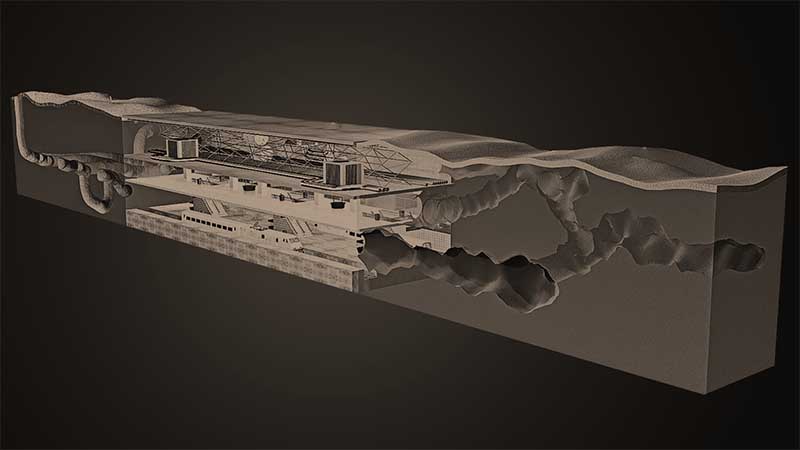We all love reading about creative problem-solving work done by competitors in past DARPA robotic challenges. Some of us even have ambition to join the fray and compete first-hand instead of just reading about them after the fact. If this describes you, step on up to the DARPA Subterranean Challenge.
Following up on past challenges to build autonomous vehicles and humanoid robots, DARPA now wants to focus collective brainpower solving problems encountered by robots working underground. There will be two competition tracks: the Systems Track is what we’ve come to expect, where teams build both the hardware and software of robots tackling the competition course. But there will also be a Virtual Track, opening up the challenge to those without resources to build big expensive physical robots. Competitors on the virtual track will run their competition course in the Gazebo robot simulation environment. This is similar to the NASA Space Robotics Challenge, where algorithms competed to run a virtual robot through tasks in a simulated Mars base. The virtual environment makes the competition accessible for people without machine shops or big budgets. The winner of NASA SRC was, in fact, a one-person team.
Back on the topic of the upcoming DARPA challenge: each track will involve three sub-domains. Each of these have civilian applications in exploration, infrastructure maintenance, and disaster relief as well as the obvious military applications.
- Man-made tunnel systems
- Urban underground
- Natural cave networks
There will be a preliminary circuit competition for each, spaced roughly six months apart, to help teams get warmed up one environment at a time. But for the final event in Fall of 2021, the challenge course will integrate all three types.
More details will be released on Competitor’s Day, taking place September 27th 2018. Registration for the event just opened on August 15th. Best of luck to all the teams! And just like we did for past challenges, we will excitedly follow progress. (And have a good-natured laugh at fails.)















Hopefully this time, simulations will run faster than during the Space Robotic Challenge.
Kind of painful to wait +6hours for a 30min simulation
Cool! Looks like a level from cortex command, i wonder if those silly little pixel-physics robots could be ported to a real robot of any value.
cool, preparing for n. korea.
Nah it’s all those underground bases they want to chase the grey aliens out of :-D
Preparing for Mars.
If you have a robot that can reliably map and navigate narrow pipes of sewer systems, you have a unsecured entrance into just about every business and residence in the developed world.
Isn’t that Simone Giertz’s territory? (Hope she’s doing well after her health problems) Shitty robots? :-D
Darpa == Vault Tec now. XD
Claustrophobic in two centuries. Oddly enough vault 88 seems bigger than all the others.
“Natural cave networks”
Wonder if this had to do with recent events?
“Man-made tunnel systems”
As much digging we’ve done in our history, but still…
“Urban underground”
Let’s see. Take one planet soon to reach it’s tipping point into Venus. Where to put all the people?
Lets hope they figure it out before ww3 starts ;)
Right, or we might have a mineshaft gap.
B^)
Let’s not forget that almost all of the Matrix happens in underground tunnel systems.
They want to emulate moles and destroy lawns in adversary countries to create distress
Moles are good for lawns, they aerate the soil and eat grubs.